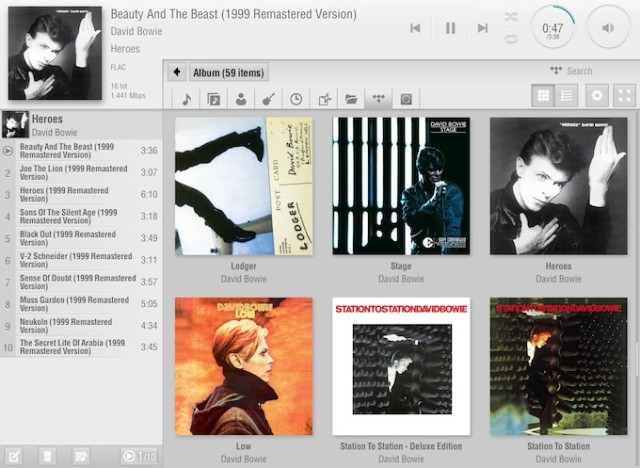
- #MINIMSERVER AND BUBBLEUPNP INSTALL#
- #MINIMSERVER AND BUBBLEUPNP MOD#
- #MINIMSERVER AND BUBBLEUPNP MAC#
OK, first off hqplayerd does not yet support cuda offloading, so I turned that off in Linux desktop too, to try and compare results (smooth playback and sq differences, if needed). Now A11 is out there and Piero, the owner of AudioLinux, has graciously put it up, but I am using generous shadowlight's offer to play guinea pig first I am running HQPlayer desktop version 3.15 and running hqplayerd at version 4.0.a8 version alpha 9 and 10 have been tested but we were having NAA problems so I downgraded to A8. So this thread's beginnings is to unclutter the normal HQPlayer thread and focus on hqplayerd and how, as a lInux newbie, I see it differing from the HQP desktop. The "regular" HQplayer that many of us use is called HQPlayer Desktop, and Audiolinux has one of those too (as well as MPD, JRIver, Roon, and many other audio products). Pretty simple first step into the world of Linux audio. Remove and reboot and I get Winwods 10 back. Simply reboot the machine with USB inserted.Audiolinux comes up. It resides on a 32GB bootable USB stick, plugged into a USB2 port on my HQP server (Windows 10, i7 6700k, 32GB, Nvidia cuda support, etc).
#MINIMSERVER AND BUBBLEUPNP INSTALL#
Before I settle on one version I thought I would take up shadowlight's recommednation to install a full plug-n-play version called Audiolinux. Some use Debian, some Ubuntu, and others a host of different forms of Linux. One thing about Linux: it is many things. (Note: CA forum member shadowlight is not a Linux idiot he has generously helped me try to get acquainted with Linux and hqplayerd. Since Jussi's Linux product called HQplayer embedded (or hqplayerd for short) can be a renderer, I thought I would begin a new thread about how this new world seems to me. I have been saying for some time that a combination of using JRemote as a control point or remote, into HQPlayer, would be the best of both worlds, as I spent quite a bit of time getting JRIver to be a very friendly GUI. I find it to be the best upsampling engine going. Compatible with Jriver, Linn Kinsky, Linn Kazoo, Lumin, Twonky, Minimserver, BubbleUPnP and others.I am a long time user (and BIG proponent) of HQPlayer. The Interchange is a DLNA/UPnP device and can support Roon with the help of this device: Like McCartney and Lennon are in the room with me. I listened recently to about 100 remastered Beatles tracks and I have never heard them like this before. This is a realistic jitter measurement of the source only, not dependent on the DAC. This shows how often the ideal time period is deviated from.Ībout 10psec standard deviation both sides of the distribution, measured at the end of the S/PDIF cable across the 75 ohm termination.

Here is the jitter distribution measurement: If you want to stream Tidal, you can use BubbleUPnP with Linn Kazoo. In my system, this SQ beats Jriver, Amarra and Roon.
#MINIMSERVER AND BUBBLEUPNP MAC#
Superb SQ can be achieved with Linn Kinsky controlling Minimserver, both freeware for Windows, Mac and Linux. The Dynamo is an ultra-fast responding linear power supply. I highly recommend using one of my external BNC coax cables because the risetimes are so fast on the S/PDIF output. Reference external silver BNC cable - $499 Standard external silver BNC cable - $275 Hynes-technology regulator for the I2S outputs - $350
#MINIMSERVER AND BUBBLEUPNP MOD#
OTL mod to eliminate S/PDIF galavanic isolation and improve jitter - $150 6-7 Hynes-technology regulators total, depending on options. Each part of the circuit has it's own Hynes-technology regulator. Turboclock uses custom Crystek oscillators. I don't usually do this, but here are the guts:Īs you can see, it's modular in design, with separate dual turboclock module and separate Ethernet module with an onboard SBC (single-board computer). The hardware is capable of outputting native DSD64 from the I2S outputs, but has not been tested. The front panel displays 6 PCM sample-rates, from 44.1 to 192.


The second chassis is a special version of the Dynamo LPS with Hynes regulation: It comprises two small chassis and has S/PDIF, AES/EBU, SE I2S and HDMI differential I2s outputs. It supports DLNA/UPnP and Roon with the help of this device: I have designed 6 generations of USB interfaces and I have to say, this is better. The Interchange Ethernet interface is my best digital audio solution ever.


 0 kommentar(er)
0 kommentar(er)
